Every year, we host the family at Christmas. To mix things up a bit, my mom and I always try to stray away from a strictly traditional menu. Be it an appetizer or part of the main course, our guests are always sure to find an unusual dish at our family table.
This year, our unexpected dish was the hummus illustrated above.
I knew it would intrigue everyone. I was ready for the many questions that would surely come my way. Questioning my concoctions is my aunts’ and uncles’ forte. Year after year, I find myself caught in an interrogation game that never ends. They always want more information than I am willing to give about the food on the table.
This year was obviously no different, especially when it came to that hummus plate. Questions swarmed from everywhere the minute I set it down. They wanted and needed to know every detail of its content.
I answered their questions with a nonchalant: labapin. That was not the answer they wanted or needed. And I knew that. But I was not ready to give in. I wanted them to try it.
Just like us, they had never eaten labapin that way before. They were thus convinced that I was making fun of them. They were right, to some extent. I was omitting key information on purpose. I simply wanted them to taste the hummus before they asked their hundred questions.
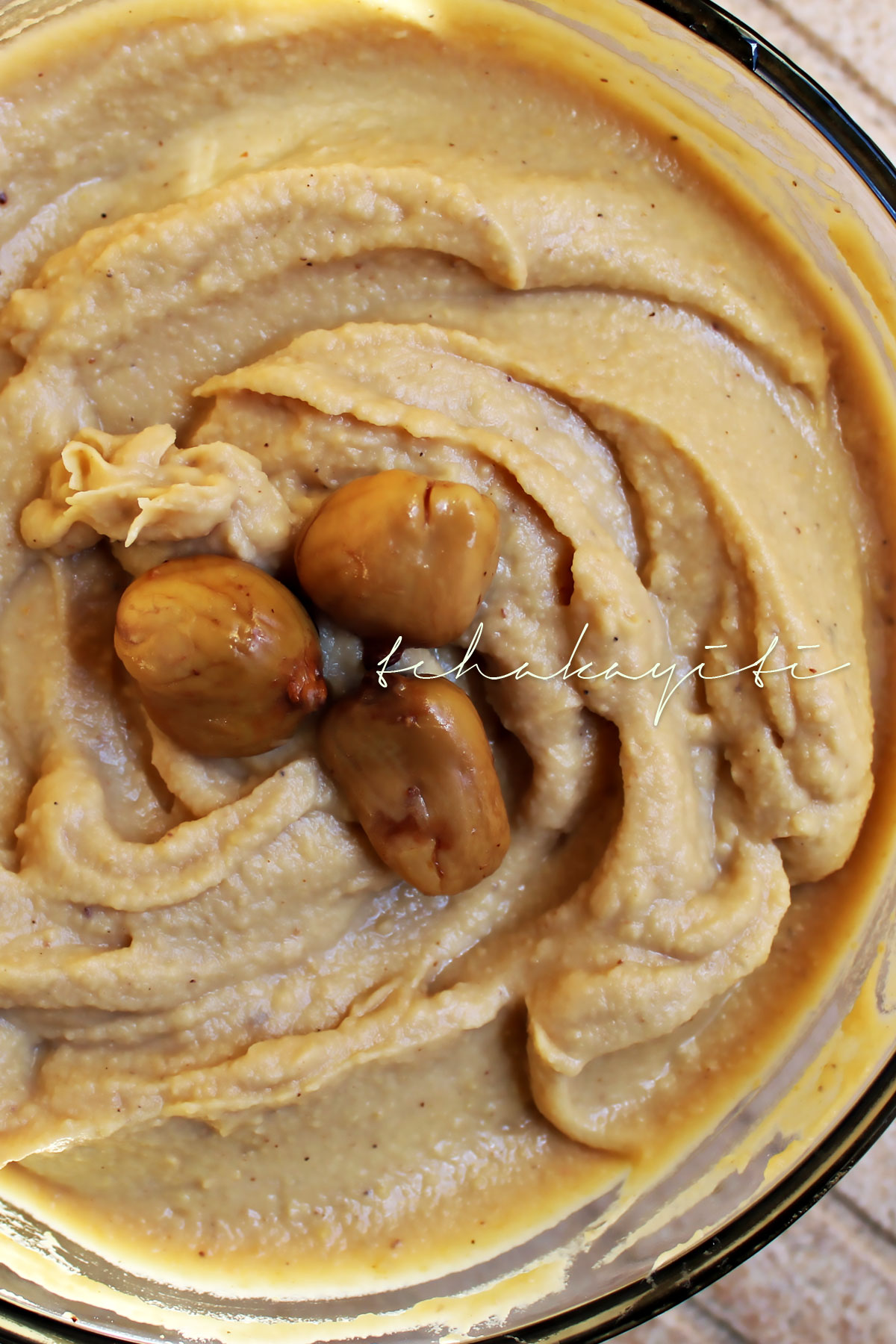
They finally dug in and sampled it when they realized my answer would not change. Then and only then, did they actually believe me when I told them I had prepared a labapin hummus. The surprised looks and smiles on their faces were priceless. They confirmed that my recipe was a success. My aunt even told me that I could publish the recipe for my “cream of labapin” on the blog.
Her seal of approval made my day. I must, however, confess that I cringed a bit when she referred to it by the name “cream.” I had named my dish hummus, and that was the name I would use on the blog.
Why call it hummus when it does not include beans?
Simply because, as I mentioned in my very first article dedicated to our lapabins, my mom and I think canned chickpeas are similar in flavor to our Caribbean chestnuts better known as breadnuts. We thus always wanted to substitute them for chickpeas in the traditional hummus.
That is exactly what I did with this recipe. I followed the same directions I would for a traditional hummus. I boiled the breadnuts in salty water like we normally do. I then peeled and reduced them to a puree seasoned with garlic, lime juice, salt, paprika and olive oil. The only ingredient missing is the tahini. But that is not a first. I am known to make my hummus without it. I do so, simply because tahini comes in big sizes, and besides the hummus I don’t have much use for it in my Haitian kitchen, yet. I thus refrain from buying it.
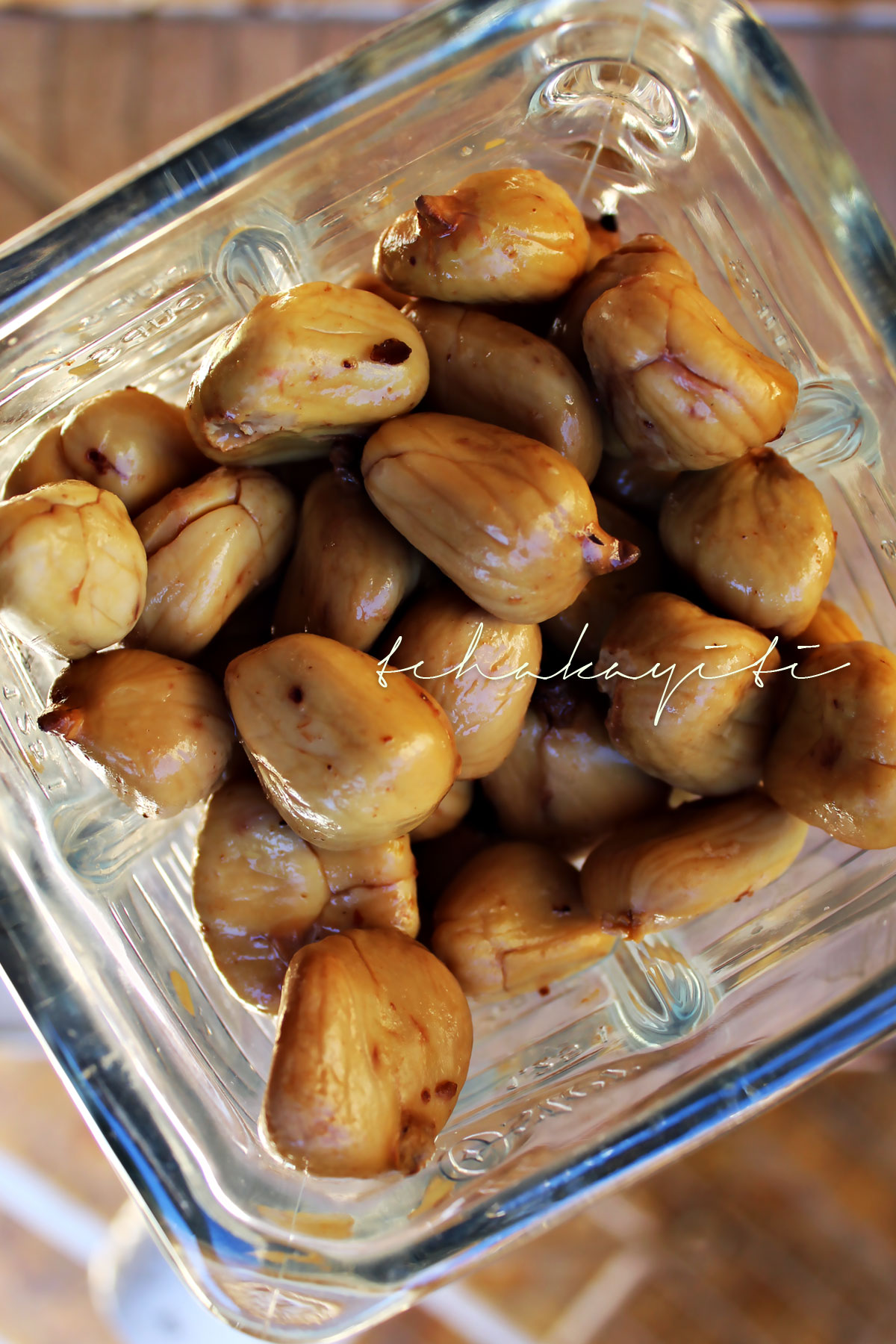
This labapin hummus was quite the adventure.
And a stressful one at that. Reducing those breadnuts to a puree turned out to be more difficult than I had anticipated. I learned that our lapabins are extremely porous. It took a lot of liquid to get them to have the right texture. I even had to puree them in separate batches so as to avoid overworking our processor. Needless to say, I was worried my hummus wouldn’t come out right.
Luckily, my fears were unfounded. Our labapin make the most unctuous hummus yet.
It’s definitely a recipe worth saving and trying. I myself will make it more often even if it means I must spend hours peeling those breadnuts.
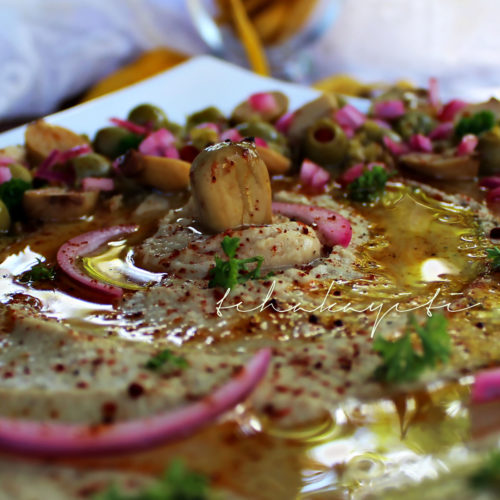
Haitian breadnut hummus
Ingredients
For the hummus
- 6 cups of boiled and peeled lapabin breadnut
- 4 garlic cloves
- 2 lime juice
- Salt to taste
- Pepper to taste
- 2-3 cups of water
- ¼ cup of olive oil more or less
For the garnish
- Green olives
- Brigthen red onions or shallots
- Chopped Parsley
- Paprika
- Boiled breadnut
Instructions
- In a blender or food processor, add the breadnut, garlic cloves, lime juice, olive oil, and 1/2 a cup of water.
- Reduce to a puree while adding more water as needed. Please note that you may have to work in batches depending on how powerful your appliance is
- When all the breadnut is fully pureed and unctuous, add salt and pepper to taste
- Put in a covered glass bowl, and allow to rest in the fridge for a couple of hours
- When ready to serve, pour your hummus on a plate
- Garnish with olives, onions or shallots, parsley and breadnuts cut in half
- Drizzle with olive oil
- Sprinkle with paprika
- Enjoy with pita bread, cassava chips or papita (plaintain chips).

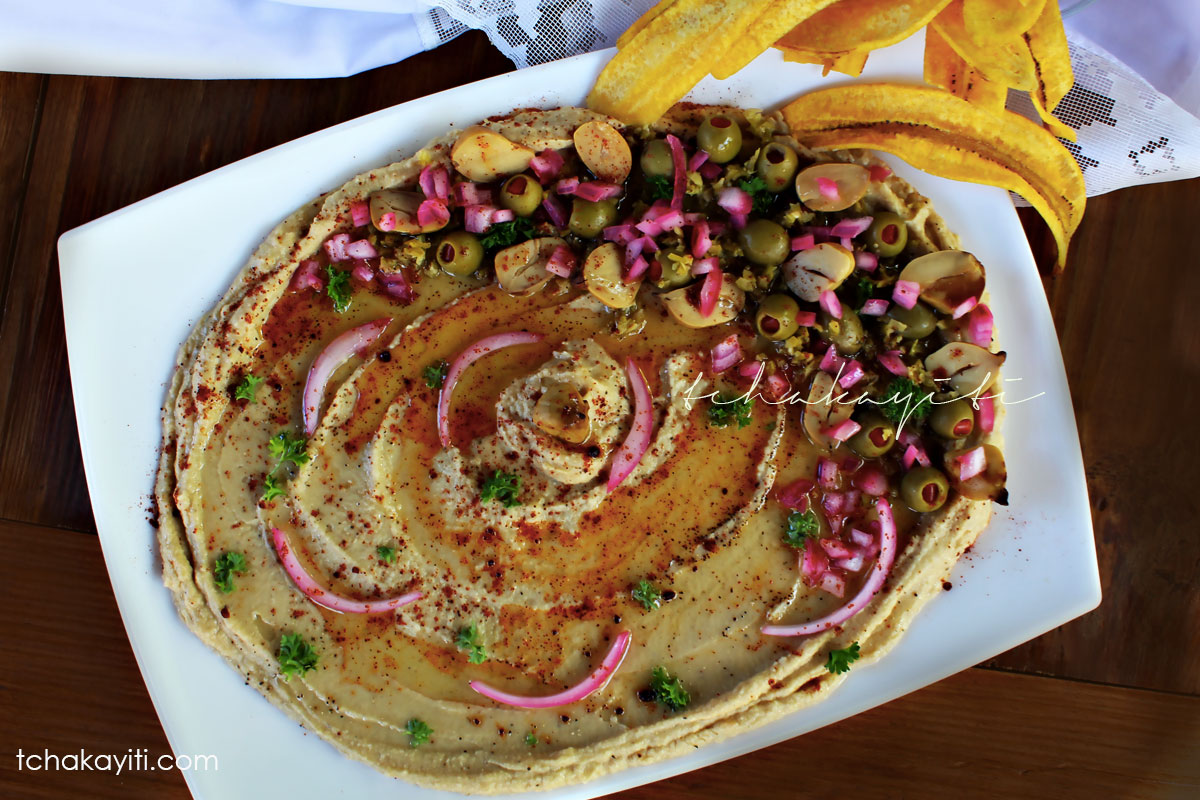
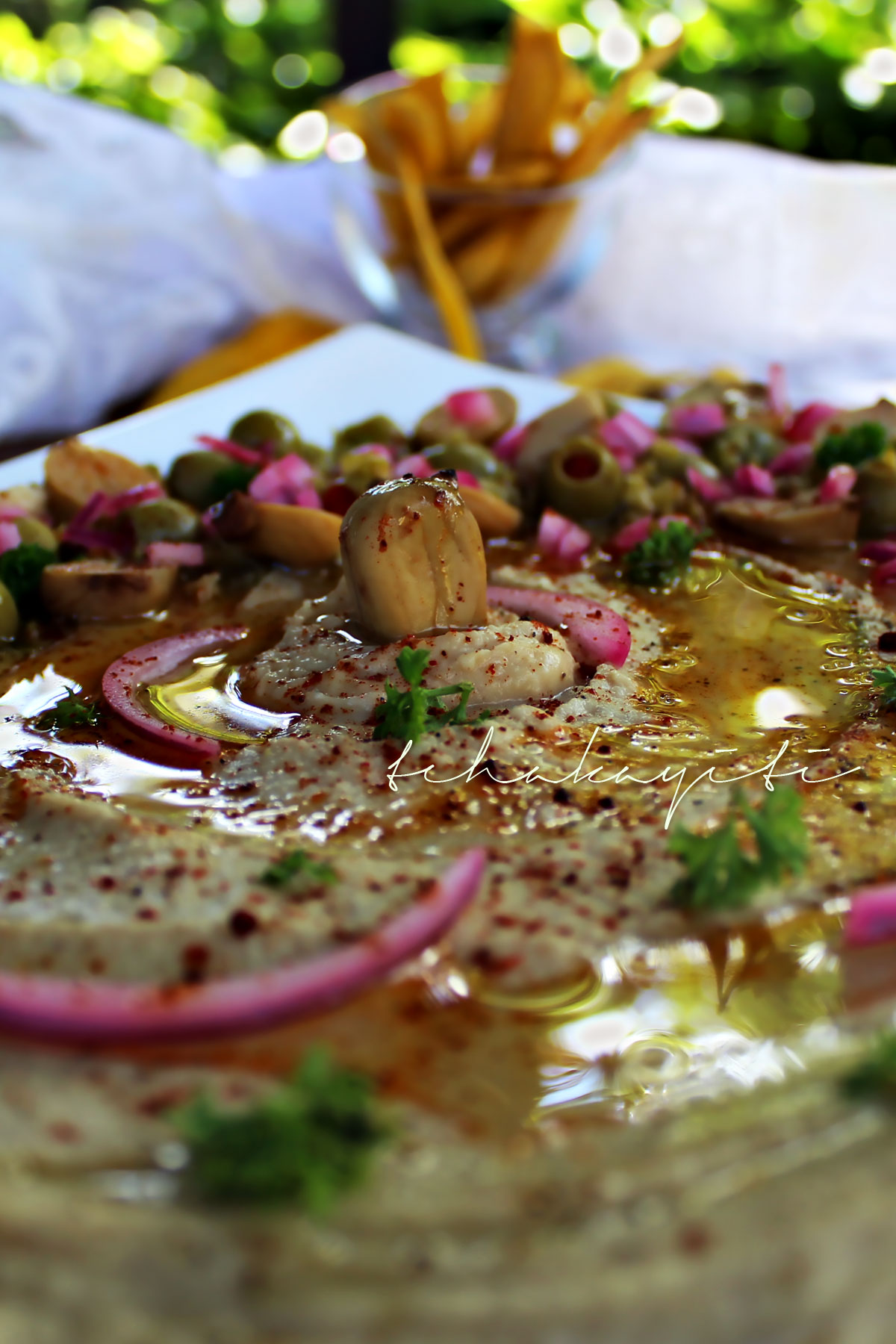


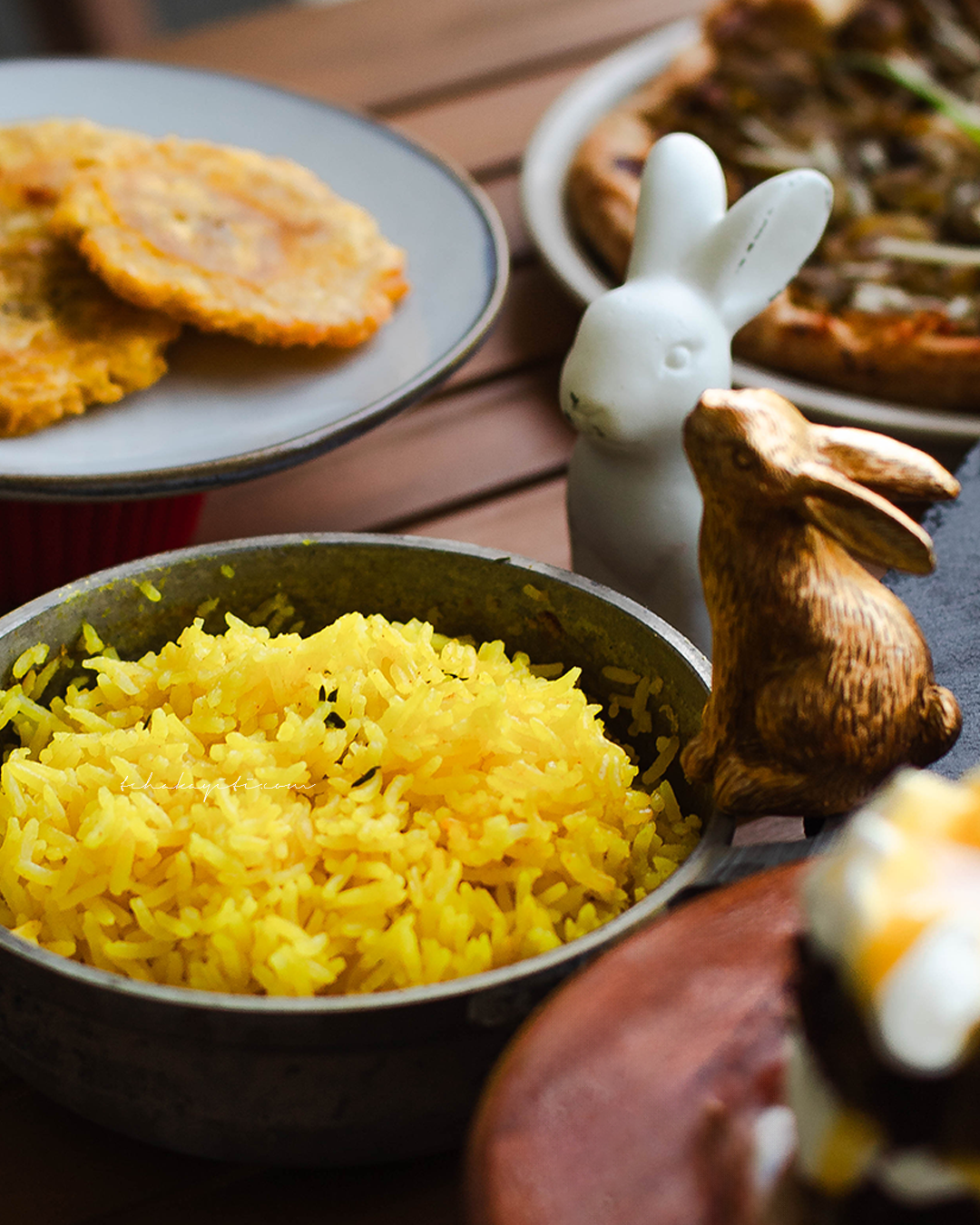
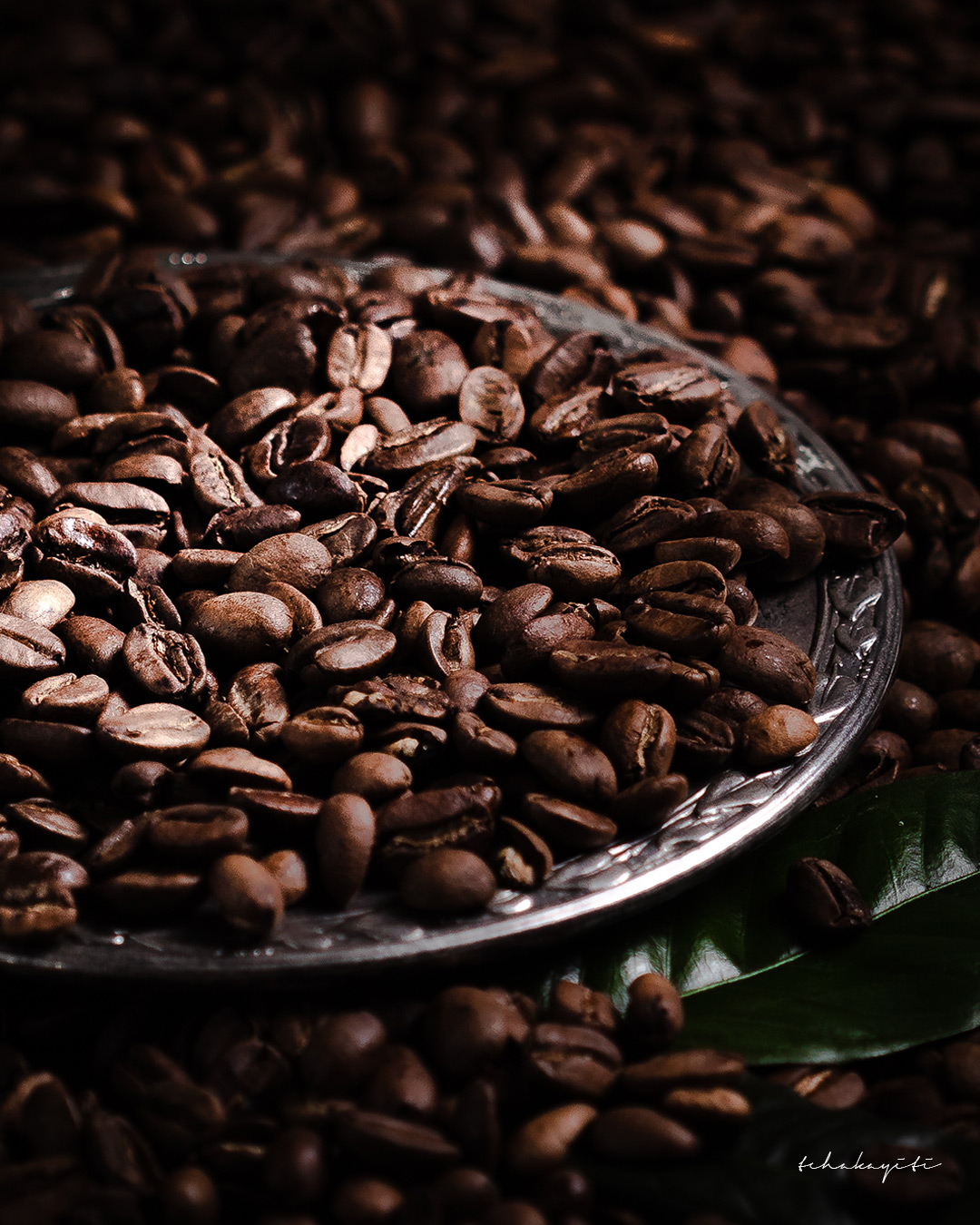
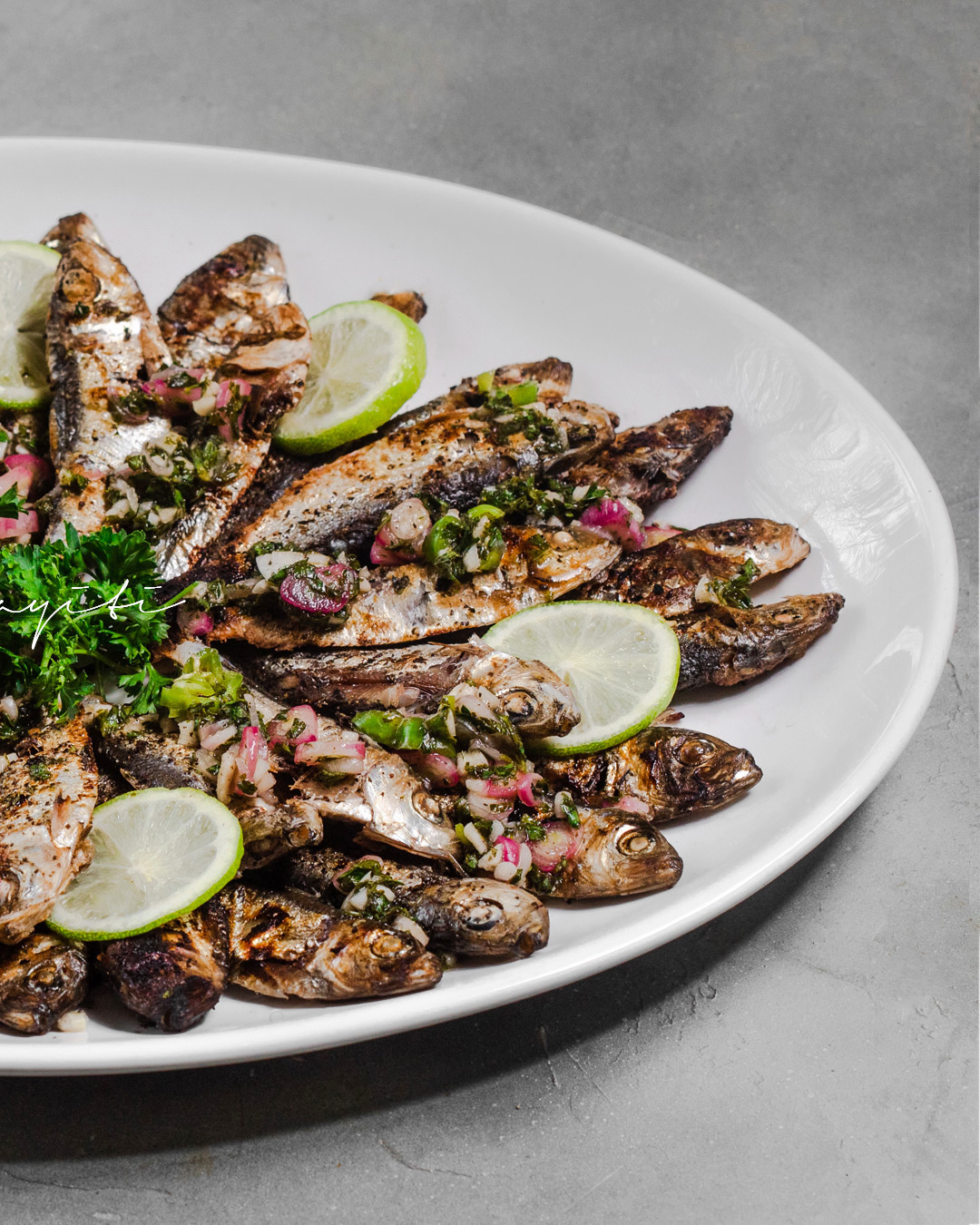

5 Comments
Your comment is awaiting moderation.
You can use Tahini to make salad dressings 😉😘
Et aussi peut-on oser dire que le tahini n’est pas indispensable vu le gout accentue du labapin!!!
omg merci beaucoup de partager tes idées innovatrices, ton expérience et surtout tes recettes. Je ne sais pas si tu as l’intention de publier un livre de recettes, car je dis souvent qu’il est temps d’Avoir une cuisine haitienne raffinée. Et à travers tes articles, je ressens le souci du détail, l’aventure etc…. Bravo encore
Merci beaucoup pour ces mots encourageants et surtout de lire mes articles. Pour le moment je travaille à enrichir le blog, un livre viendra sans doute avec le temps 🙂
Bonjour Annick
Je suis du même avis que Gevany JOSEPH. Bonne continuation
As Annick says, it was delicious. I was her first taster. Give it a try.